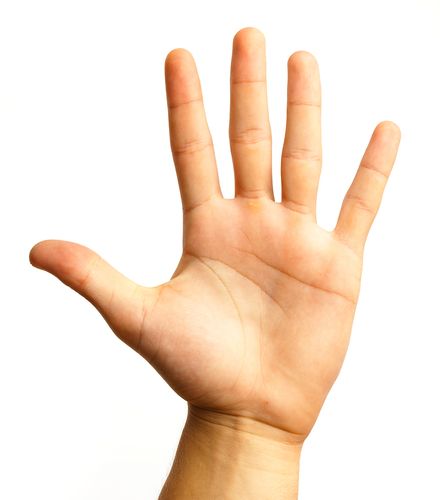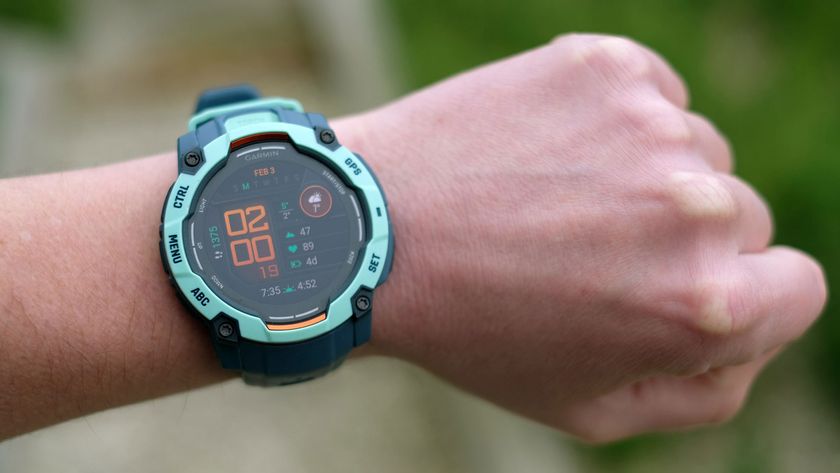
With One Slip, a Hand Injury Could Ruin Your Winter

Dr. Michael Ruff, is director of the Hand and Upper Extremity Center at The Ohio State University Wexner Medical Center. He contributed this article to LiveScience's Expert Voices: Op-Ed & Insights.
Your hands are often the most used body part you have, and when one (or both) of those hands is injured, you are going to quickly notice how much you rely on them every day. During the winter — whether you live in a state that has a large amount of snow/ice or not — there is inevitably going to be a time when more people are slipping and falling. All it takes is one wrong move and you could end up with a hand or wrist injury.
It is natural for people to try to prevent a fall with their hand . Most people will involuntarily reach out to brace themselves with their hands in order to avoid injuring another body part, like their head or face. Unfortunately, by doing that, more often than not the force of that fall on your wrist can lead to a wrist fracture.
The human hand is a very complex body part — each has more than two dozen bones, more than one hundred ligaments and more than three dozen muscles. A slight movement in the wrong direction can mean a big injury with a potentially long recovery period.
At the Hand and Upper Extremity Center at The Ohio State University Wexner Medical Center we have four surgeons who treat all types of hand and wrist injuries. Since Ohio winters tend to bring fairly snowy or icy conditions, it is not uncommon for us to see dozens of people each week for a hand or wrist injury. Many are elderly with pre-existing balance or gait problems who are not as steady on their feet even in normal conditions. Something as simple as walking to the mailbox or getting in and out of the car can lead to a fall.
The most important factor in preventing hand injuries is awareness. When there is ice or snow in the forecast, make a plan to clear off your sidewalks and your driveway. Even when there is no visible snow or ice, subfreezing conditions can lead to 'black ice' which is equally treacherous. Also, it is important to make sure you have proper shoes. Your shoes and boots should have a good grip on the bottom, and sturdy soles. If new boots are not in your budget, consider a product like Yaktrax, which is applied to the bottom of any pair of shoes — the spikes on the bottom help you walk on icy surfaces. All of these tips may sound like common sense, but you would be surprised at the number of people I talk to who say they fell because their sidewalk or driveway was not cleared properly.
Wrist injuries and fractures can come in all varieties of complexity, from simple sprains to displaced fractures. Many people believe if you can't move your hand or wrist, it is automatically broken. This is not always the case. You can tear or strain a ligament in your hand or wrist and you might not be able to move it much. Conversely, if you hurt your hand or wrist and you can still move it, it doesn't automatically mean that it is not broken. That is why it is important to get it looked at by a physician.
Sign up for the Live Science daily newsletter now
Get the world’s most fascinating discoveries delivered straight to your inbox.

Initial treatment of a wrist injury involves splinting for immobilization and to help control pain. If a splint is not readily available, wrapping the limb in bulky towels, a blanket or even supporting it by wrapping a magazine around it can suffice — temporarily. Clearly, if there is extreme pain or deformity, initial treatment in an emergency room or urgent care center is needed. For persistent wrist pain after the initial insult, it is prudent to have an expert examine your injury to avoid any potential problems down the road.
Treatment is tailored to the individual and the specific type of wrist injury. Some will require only splinting to allow healing, while others may require surgery. A physical exam will determine the extent of the injury(or injuries) and the need for an x-ray or possibly an MRI. From there, your doctor can look at which treatment option will result in the best and quickest recovery. [Five Unexpected Ways Cold May Threaten Your Health ]
Another common winter-weather related hand injury is from snowblowers harming fingers. I cannot repeat it enough: It is never a good idea to clear out a blocked snowblower with your hand. There are plenty of tools on the market that are worth the money that can clear your snowblower. I have seen too many people lose a finger, or even multiple fingers, when they choose to clear a blower with their hands.
The views expressed are those of the author and do not necessarily reflect the views of the publisher. This version of the article was originally published on LiveScience.











